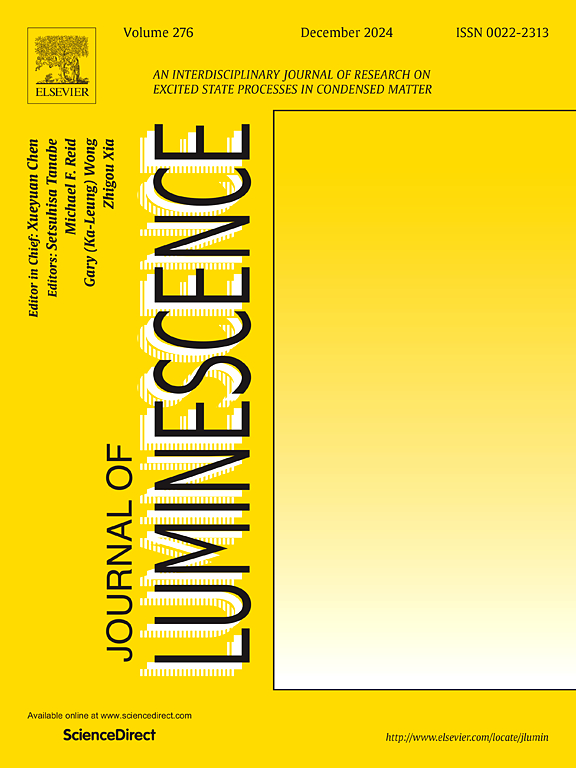Impact of base layer thickness on the performance of single-junction GaAs solar cells: A photoluminescence and photoreflectance study
IF 3.6
3区 物理与天体物理
Q2 OPTICS
引用次数: 0
Abstract
We investigate the influence of absorber layer thickness on the optical and electrical performance of single-junction GaAs solar cells through comprehensive photoluminescence and photoreflectance spectroscopy, supported by theoretical analysis. Four samples with base layer thicknesses ranging from 1 to 2.5 μm were studied using power- and temperature-dependent PL spectroscopy. The results indicate that radiative recombination is the dominant mechanism across all samples, with the 1.5 μm-thick base layer exhibiting the lowest activation energies. PR measurements were employed to evaluate electric field strength and carrier trapping dynamics within the depletion region. Among the samples, the 1.5 μm device demonstrated the strongest built-in electric field and the shortest trapping time. Correlation with previously reported electrical performance data confirms that the 1.5 μm base layer yields the highest open-circuit voltage, short-circuit current density, and overall conversion efficiency. These findings highlight the critical role of absorber thickness optimization in enhancing performance, offering deeper insights into the interdependence of optical and electrical properties. Furthermore, photoreflectance phase diagrams emerge as a simple and contactless method for assessing carrier trapping behavior and evaluating device performance.
基层厚度对单结砷化镓太阳能电池性能的影响:光致发光和光反射研究
在理论分析的支持下,通过综合光致发光和光反射光谱研究了吸收层厚度对单结砷化镓太阳能电池光电性能的影响。利用功率和温度相关的PL光谱研究了基材厚度在1 ~ 2.5 μm之间的4种样品。结果表明,在所有样品中,辐射复合是主要的机制,其中1.5 μm厚的基材层具有最低的活化能。利用PR测量来评估耗尽区内的电场强度和载流子捕获动力学。其中,1.5 μm的器件具有最强的内置电场和最短的捕获时间。与先前报道的电性能数据的相关性证实,1.5 μm基层可以产生最高的开路电压、短路电流密度和整体转换效率。这些发现突出了吸收剂厚度优化在提高性能方面的关键作用,为光学和电学性能的相互依赖性提供了更深入的见解。此外,光反射相位图作为评估载流子捕获行为和评估器件性能的一种简单且非接触的方法出现。
本文章由计算机程序翻译,如有差异,请以英文原文为准。
求助全文
约1分钟内获得全文
求助全文
来源期刊

Journal of Luminescence
物理-光学
CiteScore
6.70
自引率
13.90%
发文量
850
审稿时长
3.8 months
期刊介绍:
The purpose of the Journal of Luminescence is to provide a means of communication between scientists in different disciplines who share a common interest in the electronic excited states of molecular, ionic and covalent systems, whether crystalline, amorphous, or liquid.
We invite original papers and reviews on such subjects as: exciton and polariton dynamics, dynamics of localized excited states, energy and charge transport in ordered and disordered systems, radiative and non-radiative recombination, relaxation processes, vibronic interactions in electronic excited states, photochemistry in condensed systems, excited state resonance, double resonance, spin dynamics, selective excitation spectroscopy, hole burning, coherent processes in excited states, (e.g. coherent optical transients, photon echoes, transient gratings), multiphoton processes, optical bistability, photochromism, and new techniques for the study of excited states. This list is not intended to be exhaustive. Papers in the traditional areas of optical spectroscopy (absorption, MCD, luminescence, Raman scattering) are welcome. Papers on applications (phosphors, scintillators, electro- and cathodo-luminescence, radiography, bioimaging, solar energy, energy conversion, etc.) are also welcome if they present results of scientific, rather than only technological interest. However, papers containing purely theoretical results, not related to phenomena in the excited states, as well as papers using luminescence spectroscopy to perform routine analytical chemistry or biochemistry procedures, are outside the scope of the journal. Some exceptions will be possible at the discretion of the editors.
 求助内容:
求助内容: 应助结果提醒方式:
应助结果提醒方式:


